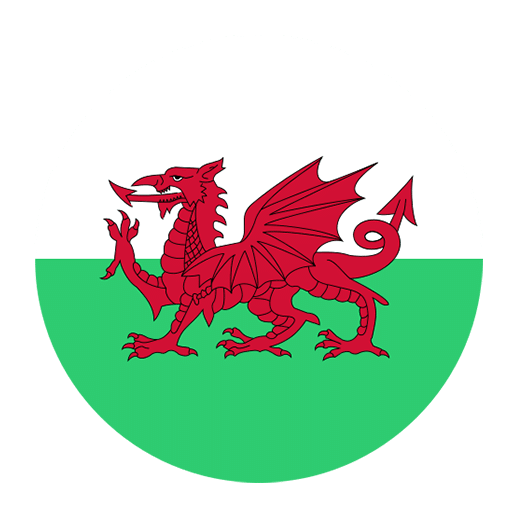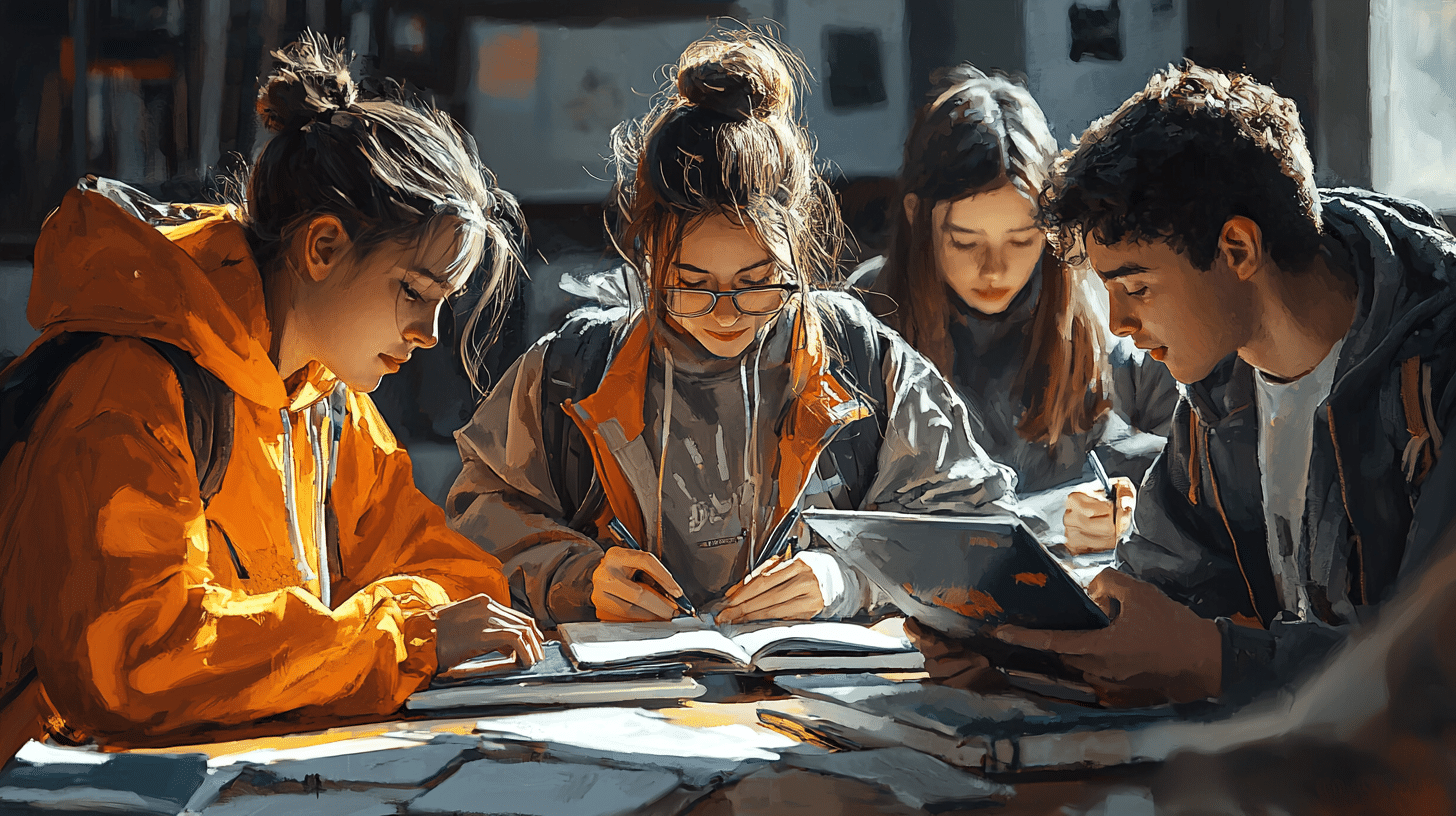Learning a new language can be an exciting and enriching experience. When delving into the world of Welsh, one of the Celtic languages spoken in Wales, it can be particularly fascinating to explore the vocabulary related to art and literature. This article aims to provide you with a comprehensive guide to Welsh vocabulary in these two vibrant fields. Whether you are an artist, a literature enthusiast, or simply someone interested in expanding your Welsh lexicon, this guide will serve as a valuable resource.
Art Vocabulary
Art is a universal language in itself, and learning the Welsh terms associated with various art forms can deepen your appreciation of both the language and the creative expressions it describes. Below are some essential Welsh words and phrases related to art.
Basic Art Terminology
1. **Art** – Celf
2. **Artist** – Artist
3. **Painting** – Paentiad
4. **Sculpture** – Cerflun
5. **Drawing** – Llunio
6. **Sketch** – Braslun
7. **Canvas** – Cynfas
8. **Palette** – Palet
9. **Brush** – Brwsh
10. **Easel** – Easel
11. **Exhibition** – Arddangosfa
12. **Gallery** – Oriel
Materials and Techniques
Understanding the materials and techniques used in art can enhance your vocabulary and your ability to discuss artistic processes in Welsh.
1. **Oil Paint** – Paent olew
2. **Watercolor** – Dyfrlliw
3. **Acrylic** – Acrylig
4. **Charcoal** – Siarcol
5. **Pencil** – Pensil
6. **Ink** – Inc
7. **Clay** – Clai
8. **Wood** – Pren
9. **Stone** – Cerrig
10. **Metal** – Metel
11. **Chisel** – Cŷn
12. **Carve** – Cerfio
13. **Modeling** – Modelu
14. **Engraving** – Engrafiad
Artistic Styles and Movements
Familiarizing yourself with different artistic styles and movements can help you better understand and describe various works of art.
1. **Abstract** – Abstradd
2. **Impressionism** – Argraffiadaeth
3. **Realism** – Realiaeth
4. **Surrealism** – Swrealaeth
5. **Modernism** – Moderniaeth
6. **Postmodernism** – Ôl-foderniaeth
7. **Renaissance** – Dadeni
8. **Baroque** – Baróc
9. **Gothic** – Gothig
10. **Romanticism** – Rhamantiaeth
Descriptive Terms
Describing art involves a rich vocabulary that can convey the nuances and emotions of a piece.
1. **Beautiful** – Prydferth
2. **Ugly** – Hyll
3. **Colorful** – Lliwgar
4. **Monochrome** – Unlliw
5. **Detailed** – Manwl
6. **Abstract** – Haniaethol
7. **Expressive** – Mynegiannol
8. **Vivid** – Bywiog
9. **Subtle** – Cynnil
10. **Bold** – Beiddgar
Literature Vocabulary
Literature is a rich field where language comes alive through stories, poems, and essays. Welsh literature has a long and storied tradition, and understanding the vocabulary associated with literature can enhance your reading and writing experience.
Basic Literary Terminology
1. **Literature** – Llenyddiaeth
2. **Author** – Awdur
3. **Writer** – Ysgrifennwr
4. **Poet** – Bardd
5. **Novel** – Nofel
6. **Short Story** – Stori fer
7. **Poem** – Cerdd
8. **Essay** – Traethawd
9. **Play** – Drama
10. **Script** – Sgript
11. **Manuscript** – Llawysgrif
12. **Publisher** – Cyhoeddwr
13. **Editor** – Golygydd
14. **Critic** – Beirniad
Genres and Forms
Literature encompasses a wide range of genres and forms, each with its unique characteristics and terminology.
1. **Fiction** – Ffuglen
2. **Non-Fiction** – Ffeithiol
3. **Fantasy** – Ffantasi
4. **Science Fiction** – Ffuglen wyddonol
5. **Mystery** – Dirgelwch
6. **Thriller** – Cyffrous
7. **Romance** – Rhamant
8. **Historical** – Hanesyddol
9. **Biography** – Bywgraffiad
10. **Autobiography** – Hunangofiant
11. **Epic** – Epig
12. **Sonnet** – Soned
13. **Haiku** – Haiku
Elements of Literature
Understanding the elements that make up literary works can help you analyze and appreciate them more deeply.
1. **Plot** – Cynllwyn
2. **Character** – Cymeriad
3. **Setting** – Gosodiad
4. **Theme** – Thema
5. **Motif** – Motif
6. **Narrative** – Naratif
7. **Point of View** – Safbwynt
8. **Dialogue** – Deialog
9. **Protagonist** – Prif gymeriad
10. **Antagonist** – Gwrthwynebwr
11. **Conflict** – Gwrthdaro
12. **Climax** – Uchafbwynt
13. **Resolution** – Datrysiad
Literary Devices
Literary devices are techniques that writers use to create special effects and deeper meanings in their works.
1. **Metaphor** – Cyffelybiaeth
2. **Simile** – Cymhariaeth
3. **Alliteration** – Cyflythreniad
4. **Onomatopoeia** – Onomatopoeia
5. **Personification** – Personoliad
6. **Hyperbole** – Gor-ddweud
7. **Irony** – Eironi
8. **Symbolism** – Symbolaeth
9. **Foreshadowing** – Rhagarweiniad
10. **Flashback** – Golwg yn ôl
11. **Imagery** – Delweddaeth
12. **Allegory** – Alegori
Descriptive Terms for Literature
Describing literature involves a rich vocabulary that can help convey the nuances and emotions of a piece.
1. **Engaging** – Cymhellol
2. **Boring** – Diflas
3. **Inspiring** – Ysbrydoledig
4. **Melancholic** – Melancolaidd
5. **Uplifting** – Codi calon
6. **Tragic** – Trasig
7. **Humorous** – Digrif
8. **Thought-Provoking** – Ysgogol
9. **Poignant** – Poenus
10. **Evocative** – Cyffrous
Combining Art and Literature
Art and literature often intersect, creating a rich tapestry of cultural expressions. Understanding the combined vocabulary can further enhance your appreciation of both fields.
1. **Illustration** – Darluniad
2. **Graphic Novel** – Nofel graffig
3. **Cover Art** – Celf clawr
4. **Book Design** – Dyluniad llyfr
5. **Calligraphy** – Caligraffeg
6. **Typography** – Teipograffeg
7. **Literary Criticism** – Beirniadaeth lenyddol
8. **Art Criticism** – Beirniadaeth celf
9. **Creative Writing** – Ysgrifennu creadigol
10. **Artistic Expression** – Mynegiant artistig
Famous Welsh Artists and Writers
To truly appreciate Welsh art and literature, it is essential to know some of the famous figures in these fields. Here are a few notable Welsh artists and writers:
1. **Richard Wilson** – Considered one of the founders of British landscape painting.
2. **Kyffin Williams** – Renowned for his distinctive and dramatic depictions of the Welsh landscape.
3. **Dylan Thomas** – One of Wales’ most famous poets and writers, known for works like “Do not go gentle into that good night.”
4. **R. S. Thomas** – A notable Welsh poet and Anglican priest, known for his themes of nature and Welsh identity.
5. **Kate Roberts** – A significant figure in Welsh literature, known for her short stories and novels that focus on Welsh rural life.
Practical Applications
Learning Welsh vocabulary for art and literature is not just an academic exercise; it has practical applications as well. Here are some ways you can use this vocabulary:
1. **Discussing Art and Literature**: Use these terms to have meaningful conversations about art and literature with Welsh speakers.
2. **Creating Art**: If you are an artist, incorporating Welsh terms into your practice can add a unique cultural dimension to your work.
3. **Writing**: Use the vocabulary to write essays, critiques, or even your creative pieces in Welsh.
4. **Teaching**: If you are a teacher, this vocabulary can help you teach art and literature in Welsh.
Conclusion
Exploring Welsh vocabulary for art and literature opens up a world of creative and cultural possibilities. Whether you are discussing a painting, analyzing a poem, or creating your own artistic works, having a robust vocabulary in these fields can enhance your experience and understanding. By learning these terms, you are not only expanding your language skills but also gaining a deeper appreciation for Welsh culture and its rich artistic and literary traditions.
So, take the time to immerse yourself in this vocabulary, practice using it in various contexts, and enjoy the beautiful interplay of language, art, and literature.

